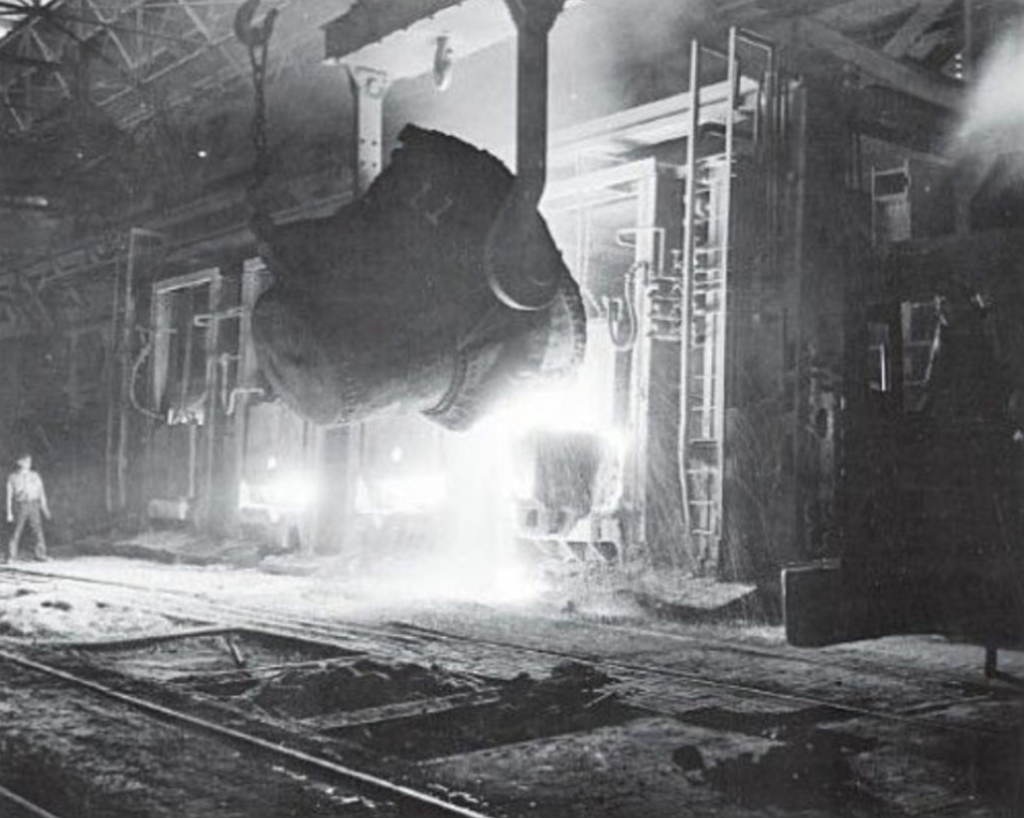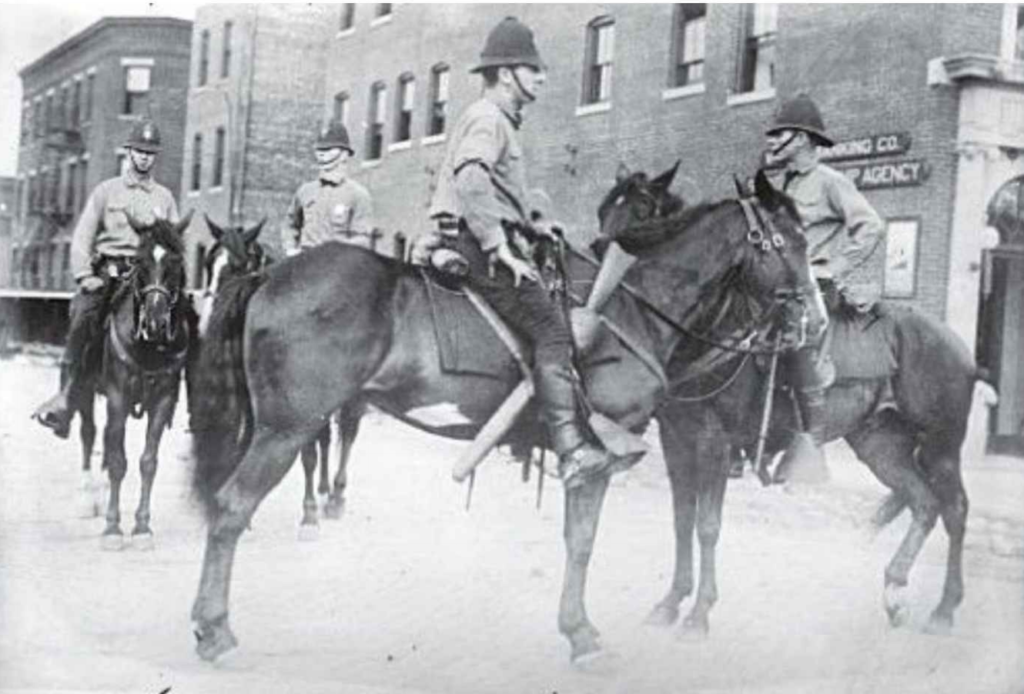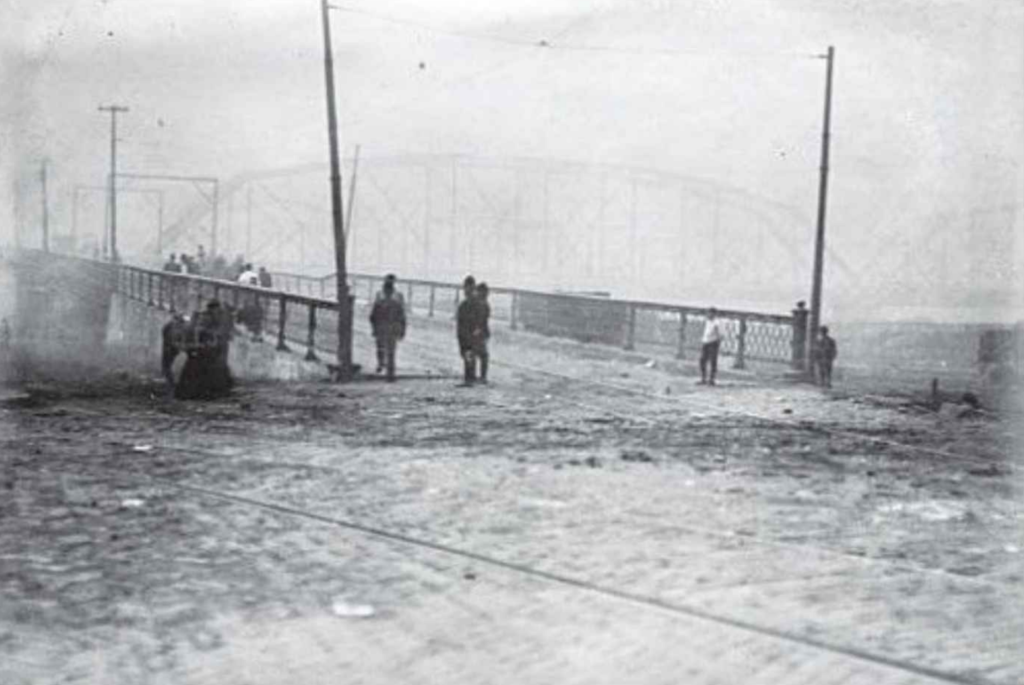
Have a nice weekend? Have any weekend at all? Ever take a paid sick day, or receive a severance package? Ever get hurt on the job and, thanks to your benefits package, not have to pay for your medical care?
Thank the labor movement—in particular, thank a steelworker.
It’s easy to forget nowadays that many of the modern working conditions we enjoy today were not guaranteed from the outset. Things like the 40-hour week or compensation for injuries were once pleasant fictions to the American worker, daydreams savored on the fifth twelve-hour factory shift in a row. In the early 20th century, steelworkers were at the forefront of a new industry, forging one of the world’s hardest metals out of raw iron, but they were also on the bleeding edge of the struggle for more and better rights in the workplace—often, the literal bleeding edge.

Steelmaking wasn’t just a dirty business in the early 1900s. It was a deadly business. As Dale Richard Perelman describes in his book Road to Rust: The Disintegration of the Steel Industry in Western Pennsylvania and Eastern Ohio, injuries and accidents were near daily-occurrences in steel mills of the day. Burns, crushed limbs, explosions, and worse set rank-and-file workers—many of whom were immigrants from Central and Eastern Europe, viewed as expendable labor—on edge not just against their treacherous environment, but against the profit-chasing mill owners and steel barons (with little-known names like J.P. Morgan, Charles Schwab, and Andrew Carnegie) that sought to squeeze every last nickel from each shift.
Early strikes against these conditions, such as the 1892 Homestead Strike, led to even greater actions, and soon the mill barons had to bring in extra security as negotiations deteriorated. In July 1909, the Pressed Steel Car Strike in McKees Rocks, PA, outside Pittsburgh—protesting sordid conditions, starvation wages, cronyism in management, and more—saw hundreds of steelworkers mobilize in solidarity with crane operators who had been unjustly fired, walking off the job in support. The mill owners responded by mobilizing their ‘coal and iron police’ to maintain order.

As we’ve seen before, there are good cops and bad cops, but then there are private cops. The hundreds of striking workers escalated to thousands, and in retaliation, the mill owners promised those positions to any men in the area who wanted them, substitute workers who would be protected by their own law enforcement. As picket lines grew more violent—an estimated 4000 workers surrounded the plant, patrolled by 300 deputies and another 500 or so company police—bottles, bricks, and soon enough bullets began to fly.
Meet Pennsylvania’s Coal and Iron Police
Sadly, as Perelman records, there are no heroes in this story. The strikers of Pressed Steel Car were just as apt to injure, and in some cases kill, their own men (on suspicion of being a scab) as they were to attack members of management who they saw as furthering their oppression. The sheriff’s deputies were just as likely to pass out riot guns with orders to shoot to kill as they were to protect vulnerable strikebreakers attempting to enter the plant. On Bloody Sunday—August 22, 1909—strikers found an off-duty local deputy named Harry Exley on a streetcar and, after a scuffle, murdered him in cold blood in the street. Exley’s death was the spark that ignited the powder keg; after that, Perelman writes,
“The state police—the Black Cossacks, the Kozaki, as many an immigrant called them—struggled to reestablish order. A pitched battle followed. Bullets flew by the thousands. Militant strikers lobbed homemade bombs and scrap fragments across the fence into the plant. Vandals destroyed buildings and looted stores. The square at Donovan’s Bridge earned the sobriquet ‘the Bloody Angle,’ with justification. Authorities on horseback trampled the guilty and innocent alike. … A patrol of constables herded sixty-three men and one woman into a makeshift boxcar prison as the battle raged through the night.”

Following the worst of the violence, the city mourned the dead and the wounded on both sides—scores of picketers and policemen had been slain or grievously injured, and though tensions still ran high, enough was enough. But the sacrifice was not in vain. When the United States Commissioner of Labor finally arrived in McKees Rocks to settle the dispute, labor and management were able to agree on terms: the company “agreed to squash grafting, eliminate Sunday work, and cut Saturday hours,” as well as grant a pay increase within 90 days. Later, Pressed Steel Car would even go on to teach English to immigrant workers, and pay for civic improvements.
As Perelman writes, it would be a long time before full unionization would reach the steel industry, a story that he chronicles over the course of the twentieth century. Further gains would spread to other sectors of labor over time, with some advances requiring national legislation to enable them. But those gains were built on the backs of early vanguards such as these, and if you’re reading this at home on a lazy Saturday or Sunday afternoon—well, now you know who to thank.
Looking for more to read during quarantine? Check out our quaran-reads here. Finding us for the first time, and want to learn more about what we do? Visit our welcome page and sign up for the Crime Capsule email newsletter. See you behind bars!



